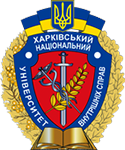Розробка мультиагентної системи управління інформаційною безпекою
Анотація
Запропоновано функціональну архітектуру системи управління інформаційною безпекою на основі мультиагентної системи для пошуку в реальному часі оптимальних рішень захисту інформації завдяки вибору за визначеними критеріями таких коаліцій агентів механізмів захисту, які дозволять побудувати оптимальний за обраними критеріями захист автоматизованої системи. Обґрунтовано та прийнято за основу модель із повним перекриттям загроз, яка дозволяє провести аналіз загальної ситуації та обрати стратегічно важливі рішення безпосередньо під час організації захисту інформації. Розкрито суть функціонування мультиагентних систем, що реалізують децентралізовану систему керування, засновану на роботі автономних агентів, які можуть бути реалізовано програмно. Визначено ролі агентів загроз, агентів ресурсів, агентів механізмів захисту та їх функціональне призначення. Узагальнено завдання пошуку множини коаліції агентів механізмів захисту для поточного стану автоматизованої системи як завдання оптимального пошуку за критерієм вартості захисту з урахуванням цінності інформації.
Завантаження
Посилання
Arafa, M., & Tahoun, A. (2021). Cooperative control for cyber-physical multi-agent networked control systems with unknown false data-injection and replay cyber-attacks. ISA Trans, 110. https://doi.org/10.1016/j.isatra.2020.10.002.
Buryachok, V. L. (2013). Modern systems of intrusion detection in information and telecommunication systems and networks. The selection model of rational variant of responding to the occurrence of extraneous influence cybernetic. Informational Security, 1(9), 33-40.
Cheng, Z., Yue, D., Hu, S., Ge, H., & Chen, L. (2020). Distributed event-triggered consensus of multi-agent systems under periodic DoS jamming attacks. Neurocomputing, 400, 458-466.
Dovbeshko, S. V., Toliupa, S. V., Shestak, Ya. V. (2019). Application of intelligent data analysis methods for building attack detection systems. Modern Information Protection, 1, 56-62. https://10.31673/2409-7292.2019.010615.
Han, J., Zhang, H., Liang, X., & Wang, R. (2019). Distributed impulsive control for heterogeneous multi-agent systems based on event-triggered scheme. Journal of the Franklin Institute, 356(16), 9972-9991. https://doi.org/10.1016/j.jfranklin.2019.01.055.
Hapon, A. O., Fedorchenko, V. M., & Polyakov, A. O. (2020). Approaches to the construction of the threat model for analysis of security of the open software code. Information Processing Systems, 1(160), 128-135. https://doi.org/10.30748/soi.2020.160.17.
Hedin, Ya., & Moradian, E. (2015). Security in Multi-Agent Systems. Procedia Computer Science, 60, 1604-1612. https://doi.org/10.1016/j.procs.2015.08.270.
Hvozdov, R. Yu., Sievierinov, O. V., & Karavaiev, V. M. (2021, April 8-9). Methodology of formal design of complex information protection systems in information and telecommunication systems [Conference presentation abstract]. XI international scientific and technical conference “Modern trends in the development of information and communication technologies and management tools”, Kharkiv, Ukraine.
Khavina, I. P., & Lymarenko, V. V. (2019). DSS controlling a machine manufacturing. In General and complex problems of technical sciences: experience of EU countries and implementation in the practice of Ukraine (pp. 319-337). Baltija Publishing.
Kozhedub, Yu. (2018). Functional model of the information security system. Information Technology and Security, 6(2), 29-42.
Koziura, V. D., Khoroshko, V. O., Shelest, M. Ye. et al. (2019). Complex information protection systems in information and telecommunication systems. Orchid.
Maslova, N. O. (2008). Methods for evaluating the effectiveness of systems for protection of information systems. Artificial Intelligence, 4, 253-264.
Ni, H., Xu, Z., & Cheng, J. (2019). Robust Stochastic Sampled-data-based Output Consensus of Heterogeneous Multi-agent Systems Subject to Random DoS Attack: A Markovian Jumping System Approach. International Journal of Control, Automation and Systems, 17, 1687-1698. https://doi.org/10.1007/s12555-018-0658-9.
Nosenko, K. M., Pivtorak, O. I., & Likhouzova, T. A. (2014). Overview of systems for detecting attacks in network traffic. Interdepartmental scientific and technical collection. Adaptive Automatic Control Systems, 1(24), 67-75.
Opirsky, I. R. (2015). Classification models of information security in information networks of the state. Scientific Bulletin of UNFU, 25(10), 329-335. https://doi.org/10.15421/40251050.
Poddubnyi, V. O., & Sievierinov, O. V. (2020). Vulnerability management using a formalized description. Radio Engineering, 203, 121-125. https://doi.org/10.30837/rt.2020.4.203.11.
Sathishkumar, M., & Liu, Ye.-C. (2022). Resilient Memory Event-triggered Consensus Control for Multi-agent Systems with Aperiodic DoS Attacks. International Journal of Control, Automation and Systems, 20(6), 1800-1813. https://doi.org/10.1007/s12555-021-0380.
Severinov, O. V, & Khrenov, A. G. (2013). Analysis of modern intrusion detection systems. Information Processing Systems, 6(122), 122-124.
Tian, Yu., Tian, S., Li, H., Han, Q., & Wang, X. (2022). Event-Triggered Security Consensus for Multi-Agent Systems with Markov Switching Topologies under DoS Attacks. Energies, 15(15). https://doi.org/10.3390/en15155353.
Tolyupa, S. V., Parkhomenko, I. I., & Shtanenko, S. S. (2021). Model of intrusion detection system in information system. Information and communication technologies, electronic engineering, 1(1), 39-50. https://doi.org/10.23939/ictee2021.01.039.
Yang, Yi., Liu, F., Yang, H., Li, Yu., & Liu, Yu. (2021). Distributed Finite-Time Integral Sliding-Mode Control for Multi-Agent Systems with Multiple Disturbances Based on Nonlinear Disturbance Observers. Journal of Systems Science and Complexity, 34, 995-1013.
Zamula, A. A., Severinov, A. V., & Kornienko, M. A. (2014). Analysis of information security risk assessment models for building a data protection system Development of Radio Technical Support, ACS and Communication of the Air Force, 2, 133-138.
Авторське право (c) 2022 І. П. Хавіна , Ю. В. Гнусов, О. О. Можаєв

Ця робота ліцензується відповідно до Creative Commons Attribution 4.0 International License.



